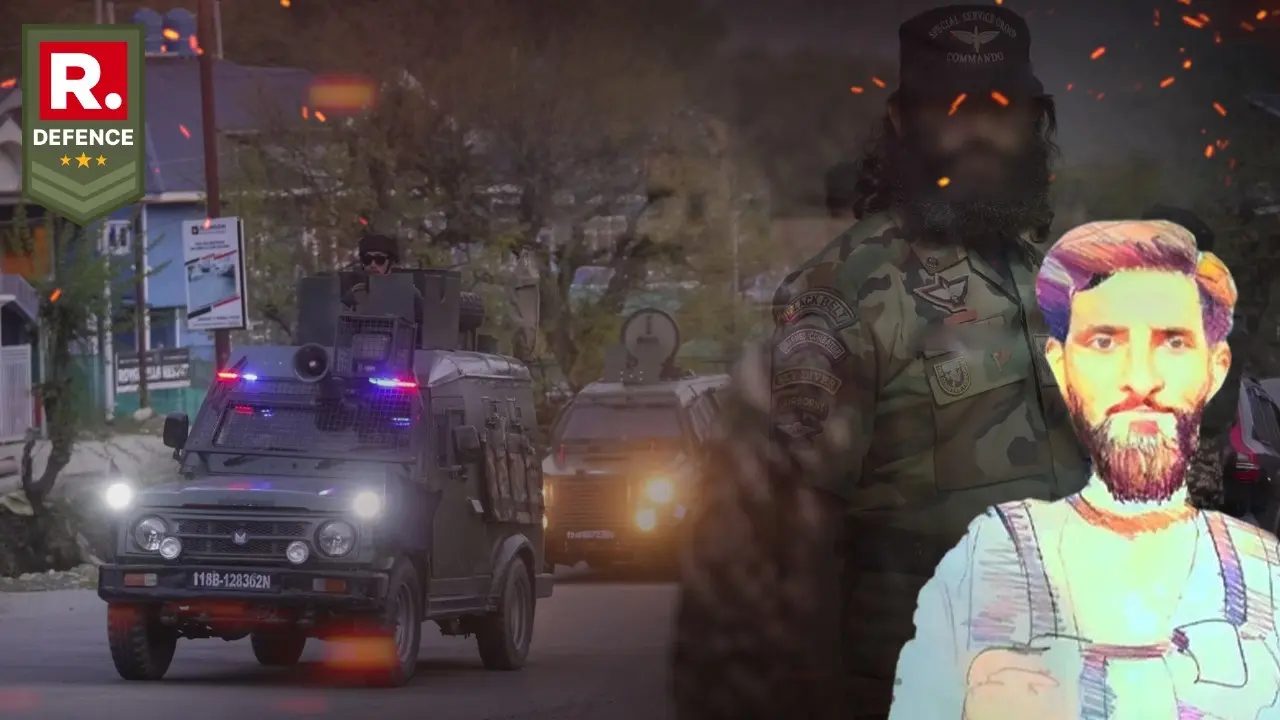Updated 5 May 2025 at 16:15 IST
Ex-SSG Commando Orchestrated Pahalgam Killings, Exposing SSG’s Legacy of Terror in Kashmir
Authorities believe Hashim Musa also planned earlier high-casualty strikes in Ganderbal and Baramulla during late 2024.
- Defence News
- 4 min read

New Delhi, India - The investigation into the brutal terrorist attack in Pahalgam has revealed chilling new details about its mastermind—Hashim Musa, a Pakistani national and former member of the Pakistan Army’s elite Special Service Group (SSG). Security officials confirmed that Musa, discharged from military service under undisclosed circumstances, has since operated as a top operative for Lashkar-e-Taiba (LeT), leading a string of coordinated assaults across Jammu and Kashmir.
Musa’s special forces pedigree has alarmed Indian intelligence agencies. Officials say he brought his SSG training—including expertise in guerrilla warfare, high-altitude navigation, and stealth-based tactical operations—directly into Lashkar’s playbook. The Pahalgam attack, which targeted non-local tourists and left 26 civilians dead, demonstrated an unusually high level of operational discipline. Attackers moved through dense forest terrain without digital support or local guides, using advanced weaponry and avoiding electronic detection, hallmark traits of elite commando units.
Local Enablers Provided Transit, Shelter, And Reconnaissance In The Pre-attack Phase
In the weeks following the April 22 attack, a joint probe by Indian Army intelligence, J&K Police, and central agencies unearthed a well-structured overground network operating out of South Kashmir. Fourteen individuals, identified as overground workers (OGWs), have been detained and interrogated for their roles in arranging logistics, scouting secure safehouses, and conducting route reconnaissance. The network allowed Musa’s team to execute the attack without alerting local law enforcement or drawing attention from routine surveillance.

Alongside Musa, the attack squad included another Pakistani national, Ali Bhai, and two local terrorists—Adil Thoker and Asif Shaikh. Security agencies believe all four were part of a self-contained strike cell designed for maximum disruption and minimum footprint. The use of locally trained accomplices further suggests LeT’s expanded capacity for hybrid warfare, blending imported terror expertise with indigenous radical networks.
Advertisement
Musa Linked to Prior 2024 Attacks in Ganderbal and Baramulla
Authorities have now formally linked Hashim Musa to earlier attacks in Gagangir (Ganderbal) and Buta Pathri (Baramulla) carried out in late 2024. Those incidents also targeted non-locals and off-duty security personnel and bore distinct tactical similarities to the Pahalgam massacre. Two local terrorists involved in those cases, both of whom underwent weapons training in Pakistan, were killed in later operations by security forces. Musa’s consistent role as the planner and coordinator of high-casualty attacks points to his growing status within the Lashkar command structure.

According to a senior officer in Indian military intelligence, “Musa is not just a field commander. His knowledge of terrain, insertion tactics, and psychological targeting makes him a strategic-level asset for LeT and their handlers in Rawalpindi.” The officer added that Musa may have been “loaned” by Pakistan’s SSG to LeT under an unofficial policy that enables deniable operations at a plausible distance from state institutions.
Advertisement
Kupwara Encounter Further Confirms SSG Footprint
The Pakistani military’s clandestine footprint in Kashmir was further reinforced by the July 27 encounter in the Kupwara sector, where Indian troops foiled an infiltration attempt across the Line of Control. One Indian soldier was martyred, another injured, and one intruder was neutralized in the exchange of fire. The body of the slain infiltrator, confirmed to be a Pakistani national, was recovered along with U.S.-origin M4 carbines and Chinese A56 assault rifles—both uncommon among local terrorists but increasingly found in SSG-aided operations.
Former Jammu and Kashmir DGP S. P. Vaid, reacting to the encounter, publicly stated that Pakistani SSG commandos are now being specifically tasked with infiltration missions and direct action operations in Kashmir. “This is no longer about irregular warfare. We are seeing trained soldiers entering the fray under the cover of terrorist groups,” he warned.
Nexus Between Pakistan Army, Political Elites, and Terror Groups Unmasked
Intelligence recovered post-Kupwara also unearthed damning evidence about deeper linkages. The neutralized terrorist, identified as Hizbul Mujahideen member Noman Ziaullah, had known ties to SSG officer Umar Farooq Sultan and was regularly seen in the company of high-profile Pakistanis, including journalist Hamid Mir and political leader Sahibzada Sanaullah. Ziaullah’s father, the late Sahibzada Ziaullah, was a prominent cleric linked to pro-Kashmir mobilization efforts in Pakistan.

Officials allege that such connections illustrate the breadth of Pakistan’s support ecosystem for terrorist groups operating in Kashmir, with military, political, and media backing functioning in tandem. These revelations are now being cited by Indian authorities as evidence of state complicity in the sustained campaign of violence in the Union Territory.
Watch - Who Is Hashim Musa? Pakistani Para Commando - Turned LeT Terrorist Behind Pahalgam Attack
Published By : Yuvraj Tyagi
Published On: 5 May 2025 at 16:15 IST
